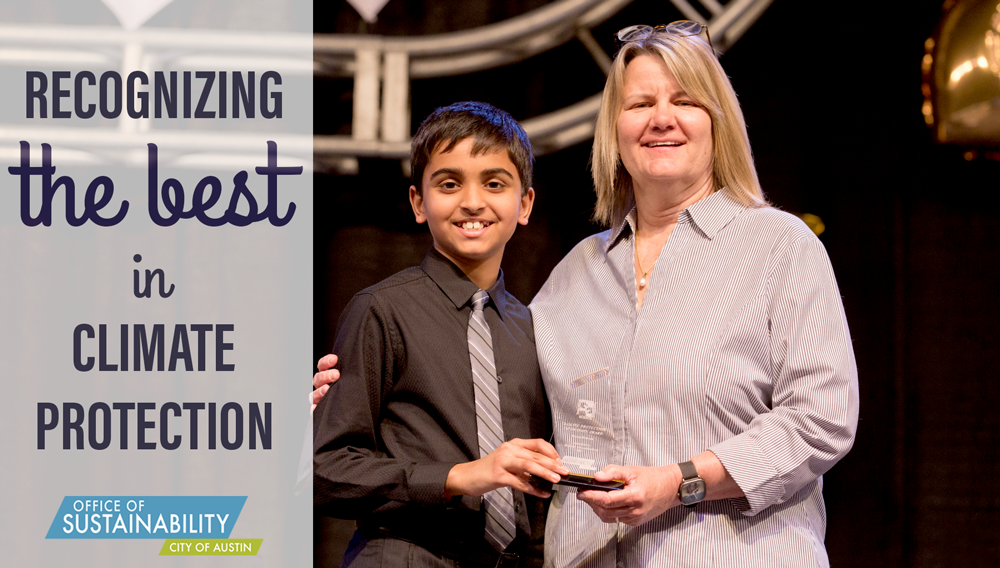Recognizing the best in Climate Protection

The Austin Energy Regional Science Festival is one of the largest science fairs in Texas, with almost 3,000 students from 3rd through 12th grades competing for top honors. This year’s theme of “Exploring Genius” brought out some of the best and brightest students in Austin. Our office was on-hand to select the “Best in Climate Protection” science projects at the elementary, middle, and high school levels. We are thrilled to announce this year’s recipients:
 Kamil Yildirim and Emin Koruglu
Kamil Yildirim and Emin Koruglu
Harmony Science Academy in Pflugerville, TX
Kamil Yildirim and Emin Koroglu (pictured left) are students at the Harmony Science Academy in Pflugerville. Together, they analyzed the environmental impact of using asphalt to pave the more than 2.7 million miles of roads and highways in the United States. Kamil and Emin determined the amount of heavy metals in asphalt and calculated the associated carbon footprint. They then compared these findings to a water-based asphalt called TerraPrime and found that the water-based option is better for the environment and human health.
 Pranav Sarma
Pranav Sarma
Artie Henry Middle School in Cedar Park, TX
Biomass is waste material from plants and animals – such as wheat stalks or yard waste – that can be burned to produce a renewable form of energy. Pranav Sarma, a student at Artie Henry Middle School in Cedar Park, evaluated several agricultural by-products to see if any could be a viable alternative to fossil fuels. Pranav found that the heat generated from banana peels, corn husks, and cow manure provided a constant amount of heat that could replace fossil fuels.
 Audrey Wood
Audrey Wood
Ford Elementary School in Georgetown, TX
Audrey Wood, a 5th grader from Georgetown’s Ford Elementary School, worked with her grandfather to produce a Hydrogen fuel source through electrolysis, which uses electricity to split water into hydrogen and oxygen. Hydrogen produced via electrolysis can result in zero greenhouse gas emissions, depending on the source of the electricity, making it a very clean energy source.
These amazing students inspired us with their efforts to reduce greenhouse gas emissions through their innovative projects, and we are proud to recognize their efforts.
